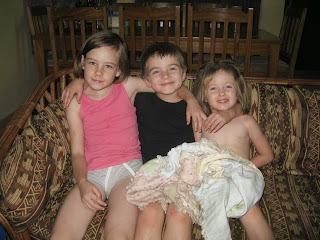Back in August I gave you the first half of my “Best Books of 2013”. Now that we have reached the end, I give you the rest of the list. Not as many this time around…partially because I am reading denser things more slowly, and partially because I don’t always have as much time as I’d like to read. J That said…here it is…
Fiction
Jayber Crow by Wendell Berry
I picked this up because Wendell Berry has been mentioned as a favorite author of many in the online CM and classical education world. I wasn’t disappointed. Well written and thought provoking tracing the life of a man named Jayber Crow from his early roots in a small farming community, to an orphanage, to the city, and back to his roots again. (Although books about being rooted into a community always make me a bit wistful since my own life has been so transient.)
The Guernsey Literary and Potato Peel Society by Mary Ann Shaffer and Annie Barrows
I picked this up when I needed a lighter read as a break from following along with the discussion of Scott’s Waverley over on the AO Forum. (I liked Waverley too, but not QUITE enough to make the List. :)) Sweet story in post-war England.
The Adventures of Richard Hannay by John Buchan
Recommended by Cindy over at Ordo Amoris, these are fast-paced spy adventures. Well written and fun to read. The first three in the series (The 39 Steps, Greenmantle, and Mr Standfast) are set against the backdrop of World War I (which made me realize how little I know about the details of WWI – all the books and talk are usually about WW2!). The last two re-visit the same characters later on (The Three Hostages and The Island of Sheep.) I think I read all 5 in about a 2 week period – they were the kind of books that are difficult to put down once you get drawn into the story.
Lark Rise to Candleford by Flora Thompson
This is a semi-autobiographical trilogy describing days gone by in the English countryside at the turn of the century (I suppose I should specify the turn of the 19th to the 20th century). The first part describing life in the small hamlet of Lark Rise was a little bit slow in places, but the rest was a coming-of-age story set against dramatically changing times. I could identify with the main character, Laura, trying to find her place in the world. We have enjoyed the BBC series loosely based on these novels (memoirs?) as well.
Ruth by Elizabeth Gaskell
A new-to-me title by the author of North and South (quite possibly my favorite novel ever). The ending was a bit of a disappointment to me, but the plot itself was a very thought-provoking tale about sin, its consequences, and redemption.
Ruth by Elizabeth Gaskell
A new-to-me title by the author of North and South (quite possibly my favorite novel ever). The ending was a bit of a disappointment to me, but the plot itself was a very thought-provoking tale about sin, its consequences, and redemption.
Christian Living
In Christ Alone by Sinclair Ferguson
Wonderful series of essays about various aspects of the Christian life. Deep and insightful (and convicting!), yet accessible at the same time. A new favorite author for me.
Marriage and Parenting
Fit to Burst by Rachel Jankovich
I didn’t like this as well as her previous book Loving the Little Years which has made my best of list before….I felt somewhat like I was getting lectured at in some of the chapters. Nevertheless there were still some very timely and helpful nuggets in this volume as well – especially in chapters 5 and 14-18.
Educational Philosophy
Home Education Volume 1 by Charlotte Mason
Most of this year has been taken up by the 20 Principles Study which has been rich and wonderful, but largely made of excerpts and articles so difficult to add to a “best books” list. J Once we finished that discussion, about a month ago, I have been doing a quick-paced re-read of CM’s first volume. Still so much good stuff even on this second pass through. (Stay tuned for another post on that soon!)

























